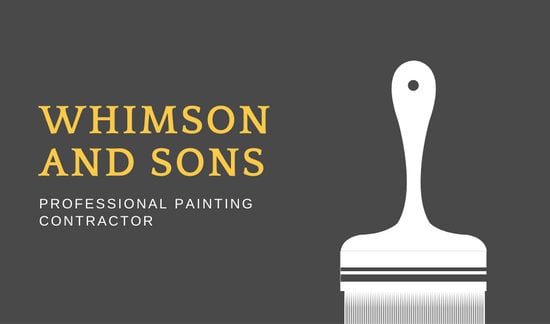The Success Of Your Commercial External Painting Project Is Considerably Influenced By Weather-- Recognize How It Can Determine The Outcome Of Your Initiatives
The Success Of Your Commercial External Painting Project Is Considerably Influenced By Weather-- Recognize How It Can Determine The Outcome Of Your Initiatives
Blog Article
Article By-MacKinnon Silver
When you're preparing a commercial outside paint task, do not take too lightly the influence of weather on your results. You need to think about factors like temperature, humidity, and precipitation, as they can make or damage your paint work. As an example, did you know that perfect conditions call for certain temperature level varieties and moisture levels? Failing to keep track of these aspects can bring about irregular finishes or perhaps damages to fresh paint. Recognizing these aspects is crucial to accomplishing a durable, professional result. So, what specific climate condition should you be wary of?
Temperature Considerations
When it comes to business outside paint, temperature level plays an essential role in the outcome of your job. If you're repainting in severe warmth, the paint can dry as well rapidly, bring about concerns like poor attachment and unequal surfaces. You want to aim for temperature levels in between 50 ° F and 85 ° F for the very best outcomes. Below 50 ° F, paint may not cure correctly, while above 85 ° F, you take the chance of blistering and breaking.
Timing your job with the ideal temperature levels is essential. Start your work early in the early morning or later in the afternoon when it's cooler, particularly throughout hot months.
Also, think about the surface area temperature level; it can be dramatically higher than the air temperature level, especially on sunny days. Use commercial painting in washington dc to examine this before you start.
If temperature levels are uncertain, keep an eye on the weather prediction. Unexpected temperature level declines or warm front can thwart your strategies. You do not wish to begin painting just to have the conditions transform mid-project.
Humidity Levels
Moisture levels significantly affect the success of your business outside paint job. When the humidity is expensive, it can prevent paint drying and treating, leading to a range of problems like bad adhesion and end up high quality.
If you're intending a job during moist conditions, you might find that the paint takes longer to dry, which can extend your job timeline and increase expenses.
On the other hand, reduced humidity can also pose challenges. Paint might dry too quickly, stopping correct application and resulting in an uneven surface.
You'll wish to keep an eye on the moisture levels carefully to ensure you're working within the excellent range, typically between 40% and 70%.
To obtain the most effective results, think about using a hygrometer to gauge humidity prior to starting your task.
If you find the levels are outside the optimal range, you may require to readjust your schedule or pick paints created for variable problems.
Constantly seek advice from the supplier's standards for specific recommendations on moisture tolerance.
Precipitation Influence
Rain or snow can substantially interrupt your commercial exterior painting plans. When precipitation takes place, it can remove freshly used paint or create an uneven finish. Ideally, you want to choose days with dry weather condition to make sure the paint adheres correctly and treatments effectively. If you're caught in a rain shower, it's best to stop the project and wait on conditions to boost.
Additionally, snow can be even more harmful. Not just does it create a damp surface, however it can likewise reduce temperature levels, making it difficult for paint to completely dry. This can bring about concerns like peeling off or blistering down the line.
It's critical to check the weather report prior to starting your job. If rain or snow is predicted, think about rescheduling.
Constantly bear in mind to enable adequate drying out time in between layers, specifically if the weather remains uncertain.
Conclusion
Finally, keeping an eye on the climate is important for an effective industrial outside paint project. By keeping track of temperature level, moisture, and precipitation, you can ensure the best conditions for application and healing. Remember to plan your job around beneficial climate and constantly comply with maker standards. With commercial painters in dallas , you'll accomplish a long-lasting, stunning surface that can stand up to the components. Do not let the climate capture you off-guard-- stay educated and paint wise!
